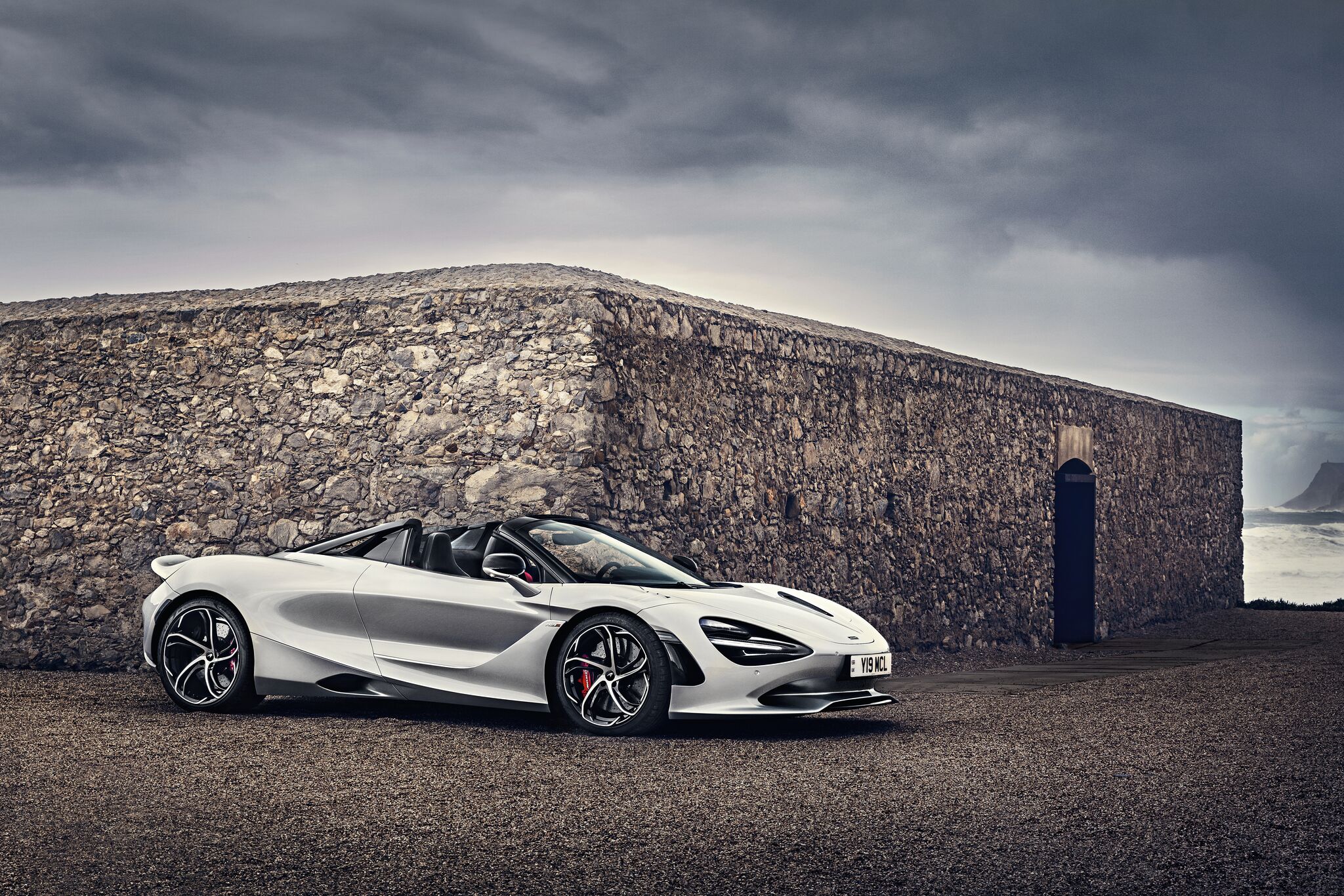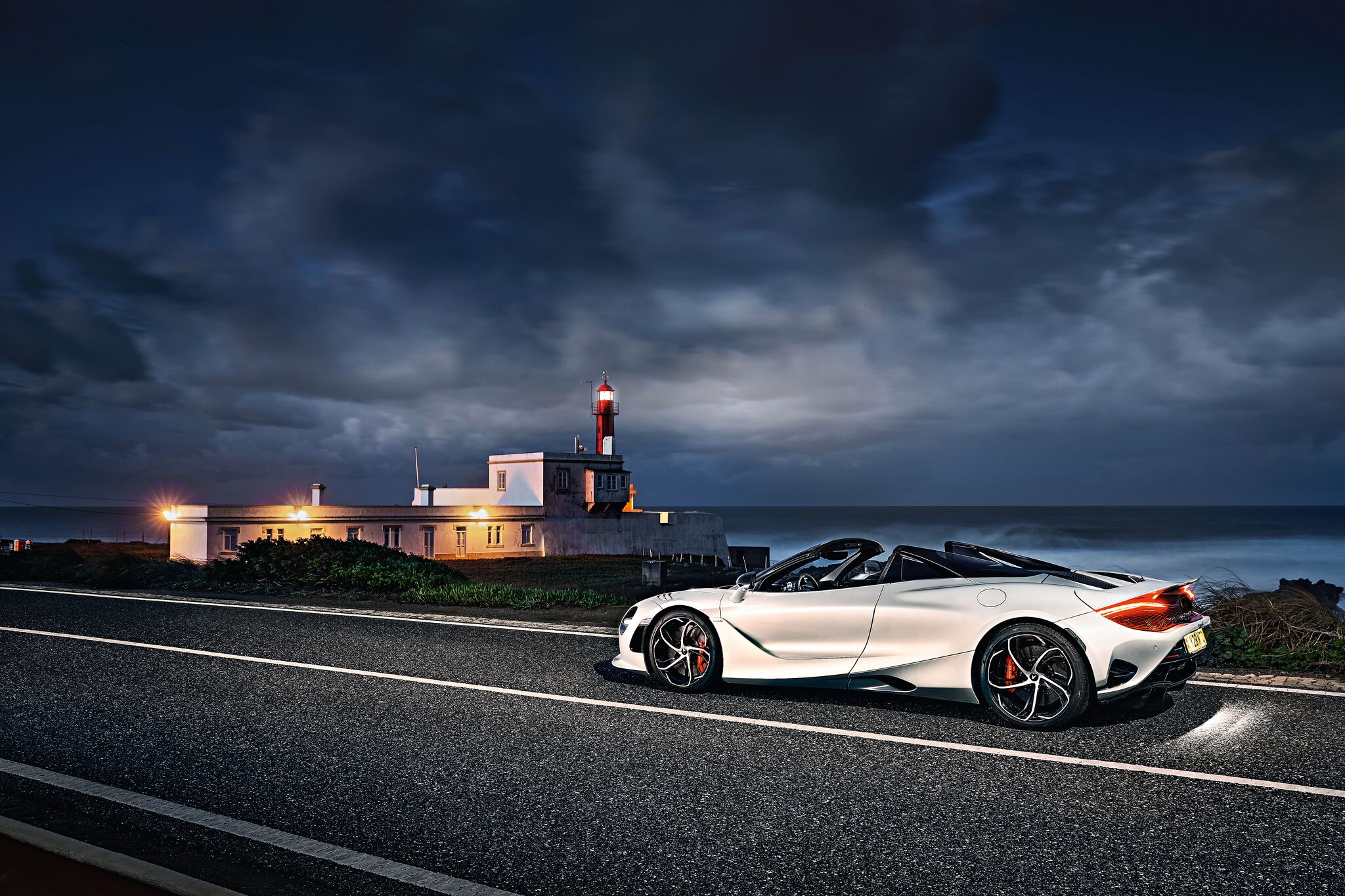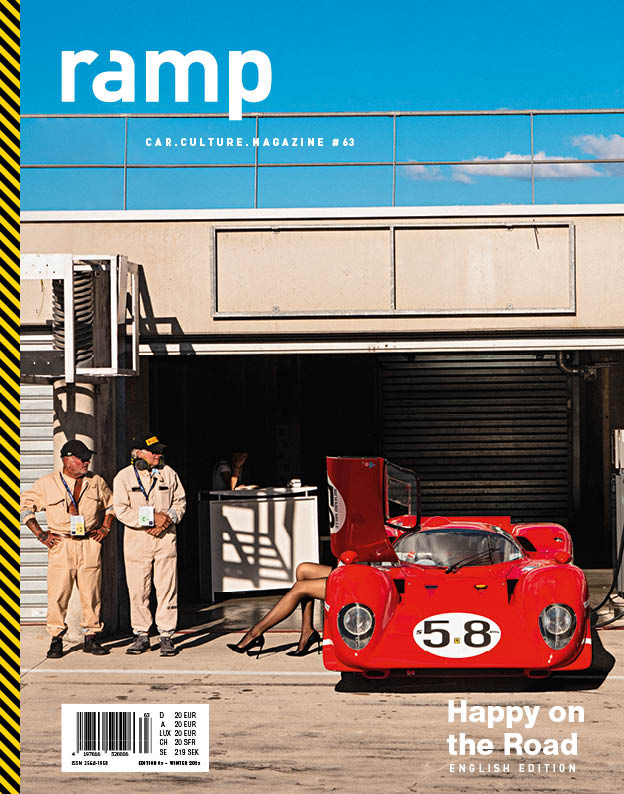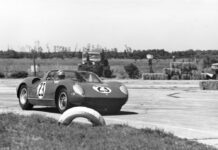It’s time. With the 750S, the last combustion-only model to come out of Woking takes to the stage – and delivers a perfect (final) performance.
But first we stop to take in the sea.

The sea has been a source of fascination since time immemorial. It sparks a longing. Inspires thought. The depths of an ocean are often romanticized as a reflection of the unconscious, imbued with unfathomable creative power. The beach, as a place onto which we project our desires, becomes both a destination of our longing as well as the perfect starting point for setting off to new shores. Because everything is always in motion here – beckoning us to set ourselves in motion not just in thought, but also for real.
Grand emotions, as vast as the sea itself. Which presumably only become so grand here because the ocean is, of course, inherently implacable. A force that cannot be tamed, the feeling of being at the mercy of the elements, the indomitable. And yes, all the Hemingways and Conrads and Melvilles are probably right when they turn the sea and its creatures into a medium for personal self-discovery. “So onwards, I say, let’s set off into the unknown,” you want to shout out loud into the harsh west wind.
But first, one last look back. And there it is, the McLaren 750S. Looking out over the roaring Atlantic at the Algarve. Dramatic sky included. Caspar David Friedrich would have been delighted with this picture. Finally, the ends of the earth. On our way to new spheres, testing our limits once again. Ready to jump into the sea. Why not?

The impression changes a bit when you know that this is the last of its kind looking off into the distance. The last combustion-only car from McLaren. That immediately evokes a sense of melancholy, mixed with nostalgia, but of course also the infinite joy of being able to be part of this special occasion. After all, happiness is only made complete by the prospect of parting, by the possibility of no longer being able to be happy. Where else would the impulse to actively pursue happiness come from?
We’ll just let the waves be waves for now, savor the sight of the sun setting on the horizon for a moment, and keep both feet on solid ground – or rather, all four wheels on the asphalt.
In Woking they’ve prepared the grand finale of the combustion era with self-assured aplomb. By setting a “new supercar standard”, as was publicized in wonderful PR style. “When you have a car recognized by so many drivers as a benchmark, to do something even better you have to examine every detail and really push hard for improvements that raise the bar again. This is what we have done with the new 750S,” as McLaren CEO Michael Leiters says. His statement was accompanied by a whole army of headlines enhanced with superlatives such as “relentless progress”, “purer engagement”, “torrential power” and “next-level peace of mind”.
The specifications back it all up: 740 hp with a torque of 800 newton-meters. The sprint to 100 km/h is achieved in 2.8 seconds, 200 km/h are reached in 7.2 seconds, and the quarter mile is completed in 10.1. There aren’t a lot of cars that can keep up with that. Even the legendary McLaren P1 is left standing after just the first few meters, despite having an electric motor to assist and despite the significantly greater power and torque. The power delivery in the 750S is generated by a McLaren M840T engine, a four-liter twin-turbocharged V8 that was developed especially for the new model. The extremely low moment of inertia raises the air pressure in the cylinders, while the high-flow fuel pump delivers liquid happiness into the combustion chamber at greater flow pressure. Additional performance optimization is guaranteed by the flat-plane crankshaft, race-inspired dry sump lubrication system and lightweight connecting rods to reduce overall powertrain mass.
The engine – how could it be any different? – is mid-mounted for ideal weight distribution, which certainly makes itself noticed when cornering. The six-millimeter wider front track, new coil spring and tailor-made two-valve damper design with passive and active elements, not to mention the faster steering ratio and a fifteen percent shorter axle ratio, contribute their share, of course. Now you just have to be able to resist the temptation to try and suspend the laws of physics when driving this car. But we’ll leave that story for another time . . .

Back to the vehicle itself. The engineers have put a lot of effort into the details all around. At first glance only subtly different from its predecessor, the 720S, around a third of the parts are new or changed. The most obvious amendments are the extended front splitter, narrower air intakes and lengthened carbon fiber active rear wing. The tailpipes are now consistently positioned in the middle – whereas in the predecessor they were still kept at a distinguished distance from each other. Actually, pretty much everything in the 750S has been perfectly centered. Chief engineer Sandy Holford emphasizes the “form follows function” design philosophy. “The organic form of the car is enhanced by reprofiled ‘eye sockets’ and a larger active rear wing. The aluminum, carbon fiber and composite bodywork is visually elegant but has the aerodynamic features incorporated, so when you look into the intakes and ducts you can understand how the airflow is controlled,” he explains.
And somehow, the people at McLaren seem to have developed an interest in numerological mysticism surrounding the number 30. In the 750S, that translates to increased performance: thirty more horses of power than its predecessor, thirty percent new or changed components, and a weight savings of thirty kilograms – which, incidentally, also applies to the convertible version, the 750S Spider. All made possible through the use of carbon fiber in all variants. The carbon fiber-shelled racing seats are a combined 17.5 kilograms lighter than the base seats in the 720S. The new ten-spoke forged wheels are said to be the lightest ever fitted as standard on a McLaren and save 13.8 kilograms. And the rear wing, although twenty percent larger, is – you guessed it – lighter as well. Only by 1.6 kilograms, but it does increase aerodynamic efficiency several times over.
Which brings us to the only catch, if you want to call it that. Because the top speed has also been cut. “Only” 322 km/h are still on the books, in contrast to the 341 km/h of the 720S. But does anyone really care? We’ll just quote rally world champion Colin McRae here, who famously said, “Straight roads are for fast cars. Curves are for fast drivers.” And the McLaren 750S, with its downforce and grip, is definitely a tool for fast drivers. In fact, the high-tech cabin has been fully designed with the driver in mind. Jamie Corstorphine, Director of Product Strategy, explains: “We set ourselves an extremely difficult challenge with the 750S, namely bringing a significant degree of McLaren ‘Longtail’ agility, feel and feedback, while ensuring that comfort and usability are not compromised – the ‘best of both’ combination that our customers tell us they want.”
There are sure to be plenty of buyers who will want to own this high-end vehicle, if only because it is the last combustion-only car from McLaren. The V8 has reached the end of its road as a solo entertainer. The adventure that lies ahead is a departure for new shores, accompanied by electric motors in every variant that the people in Woking can come up with.
So is it really time to say goodbye, here, looking out over the choppy Atlantic Ocean on Portugal’s southern coast? No. The end has only just begun. A wonderful road movie lies ahead. With 740 hp. In the Spider, of course. After all, we want to feel the salty sea air blowing through our hair.
Text by Bernd Haase
Photos by McLaren
ramp #63 Happy on the Road











